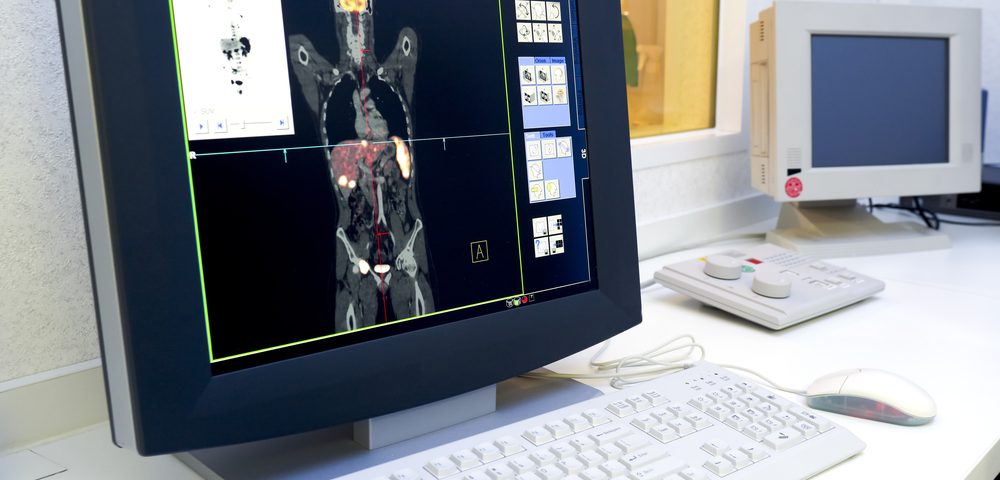A recent study-based article demonstrates that prostate-specific membrane antigen (PSMA)-PET scans can identify prostate cancer patients likely to benefit from salvage radiation therapy (SRT) after a radical prostatectomy, and that the scans are more informative than traditional clinical parameters.
PSMA is a well-characterized imaging biomarker of prostate cancer. It can be used as a radio tracer in PET scanning to identify prostate-specific tumor regions.
The study, “Treatment Outcomes from 68Ga-PSMA PET/CT–Informed Salvage Radiation Treatment in Men with Rising PSA After Radical Prostatectomy: Prognostic Value of a Negative PSMA PET,” was published in the Journal of Nuclear Medicine.
“The research is novel because it looks at the impact of PSMA PET/CT on patient responses to treatment, not just on whether the PET scan results in changed management,” lead author Louise Emmett, MD, said in a press release. “In the study, these patients underwent imaging with a PSMA PET scan and had treatment based on the results of the scan findings. The study then followed how these men were treated, and whether the treatment was effective.”
For men who undergo radical prostatectomy (RP), their disease is generally measured by following prostate-specific antigen (PSA) levels. However, 20 to 50 percent of these men will relapse.
Currently, SRT to the prostate region is the only potentially curative therapy available to these men. Classifying patients by PSA levels can help determine which men are most likely to benefit from SRT. For example, studies have shown that patients with low serum PSA levels (less than 0.5 ng/mL) and treated by SRT have better outcomes.
However, there are still a significant number of men who do not respond to therapy despite low PSA levels. Some suggest this may be due to spread of the cancer to the lymph nodes or distant body regions.
The study included 146 men, 99 of which received SRT and were followed for a median of 10.5 months. In this group, overall treatment response was 72 percent. However, for patients with a negative PSMA-PET result or positivity only in the localized prostate, the treatment response climbed to 82.5 percent. On the other hand, the response rate was only 53 percent in men with PSMA-PET positivity for lymph nodes or distant disease.
Further analysis showed that PMSA-PET is more predictive of benefit from SRT compared to other clinical parameters such as Gleason Score, surgical margins, tumor stage, or PSA levels at imaging.
“While further study of larger patient groups with longer follow-up times is needed for this cohort of prostate cancer patients, this study is pivotal in providing evidence for change in practice,” Emmett concluded.

